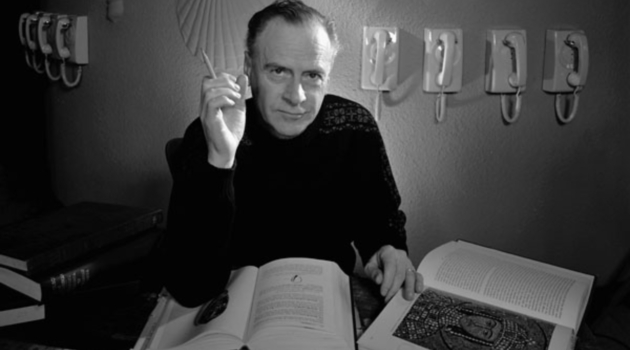
Feb. 18, 2014
proto_PROXY: Marshall McLuhan
PROXY, an experiment in flexible urbanism, inspired by the provocative visions of speculative architecture studios of the 1960s and ‘70s, seeks to answer a set of questions: How responsive to change can we expect a city to be? Are there strategies for re-imagining the urban condition that can be derived from the provocative visions of the architects who have come before us? How should we conceptualize and inhabit the space between the permanent, durable city and the (non-architectural) network of our connected devices?
proto_PROXY takes a look at envelope a+d’s influences and how they shape PROXY’s manifestation at the corner of Hayes and Octavia in San Francisco.
Marshall McLuhan was a Canadian philosopher and pioneer in the study of media theory. You may know his catchy expressions like “the medium is the message” and “global village”. McLuhan is well-regarded for not only turning pretty phases, but for theorizing about how media impact social interactions.
McLuhan wrote about the changes brought about by Gutenberg’s printing press in his 1962 book “The Gutenberg Galaxy”. Through the advent of movable type, visual culture was privileged over the oral/aural culture that had been dominant throughout history. According to McLuhan, this contributed to the proliferation of trends in the Western world like individualism, democracy, protestantism, capitalism and nationalism.
But, as we in the 21st century could probably intuit, the ways in which we communicate have shifted again in the age of the Internet and mobile devices that keep us on the grid at all times of day or night. Turns out, McLuhan beat us to the punch; also in “Gutenberg Galaxy”:
“The next medium, whatever it is — it may be the extension of consciousness — will include television as its content, not as its environment, and will transform television into an art form. A computer as a research and communication instrument could enhance retrieval, obsolesce mass library organization, retrieve the individual’s encyclopedic function and flip into a private line to speedily tailored data of a saleable kind.”
McLuhan actually lost favor among media theorists for a few decades near the end of the 20th century, but for reasons that are obvious, his work has been given more credence since the dawn of the Internet Age.
The connectedness afforded us by the Internet and our iPhones has revved up the pace of life. Yet, the city as a physical social construct seems frozen; a durable entity that is slow to adapt or respond to the advent of our networked culture and our mediated lives. PROXY aims to mitigate the discrepancy between our digital lives and our physical lives. What if we looked at the built environment as merely frames for content to flow through? Information technology borrows the word architect to describe the design of complex systems and networks; what if the transfer of ideas became a two-way street and we adopted “responsive design” as the way to build for today?
